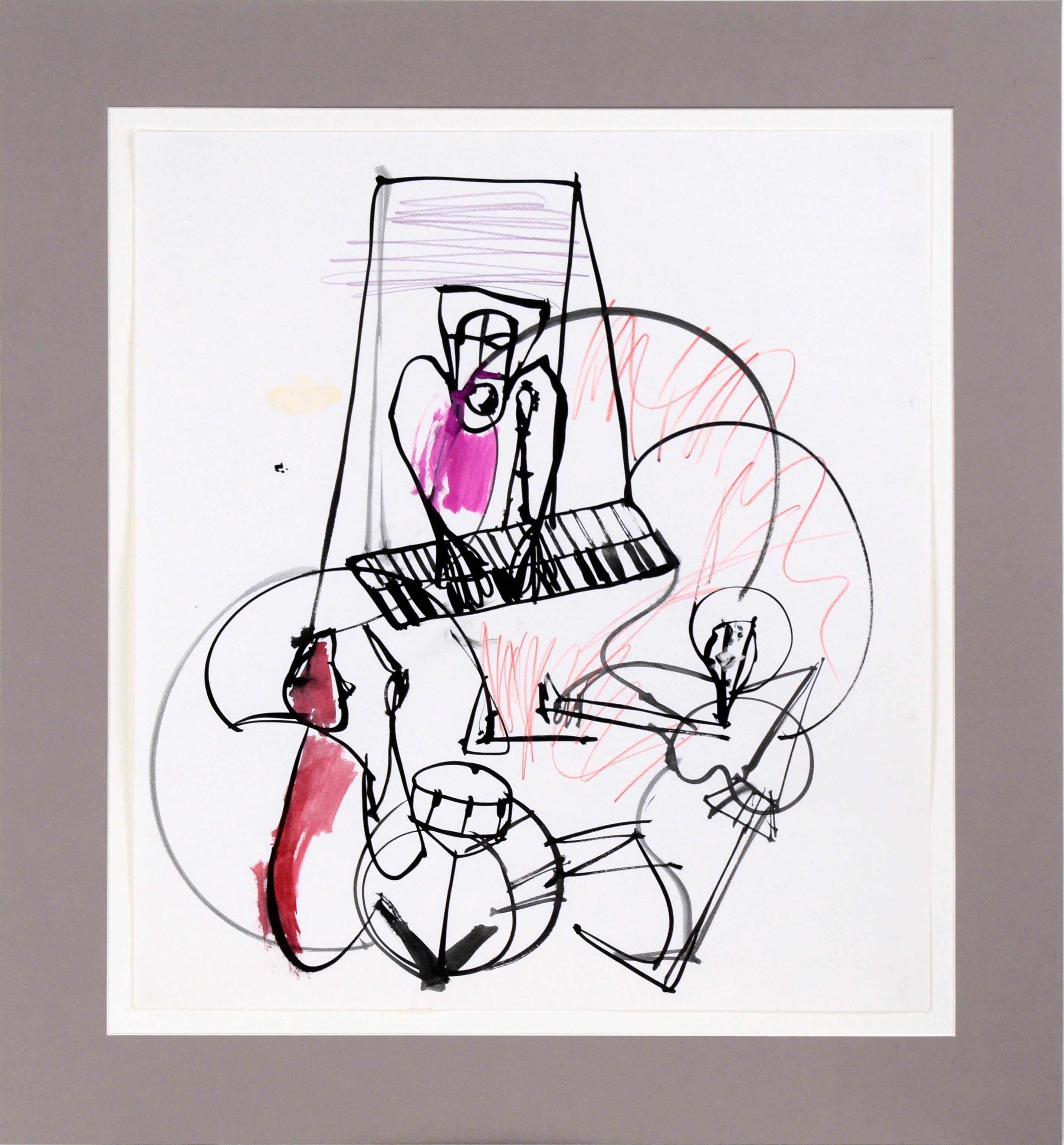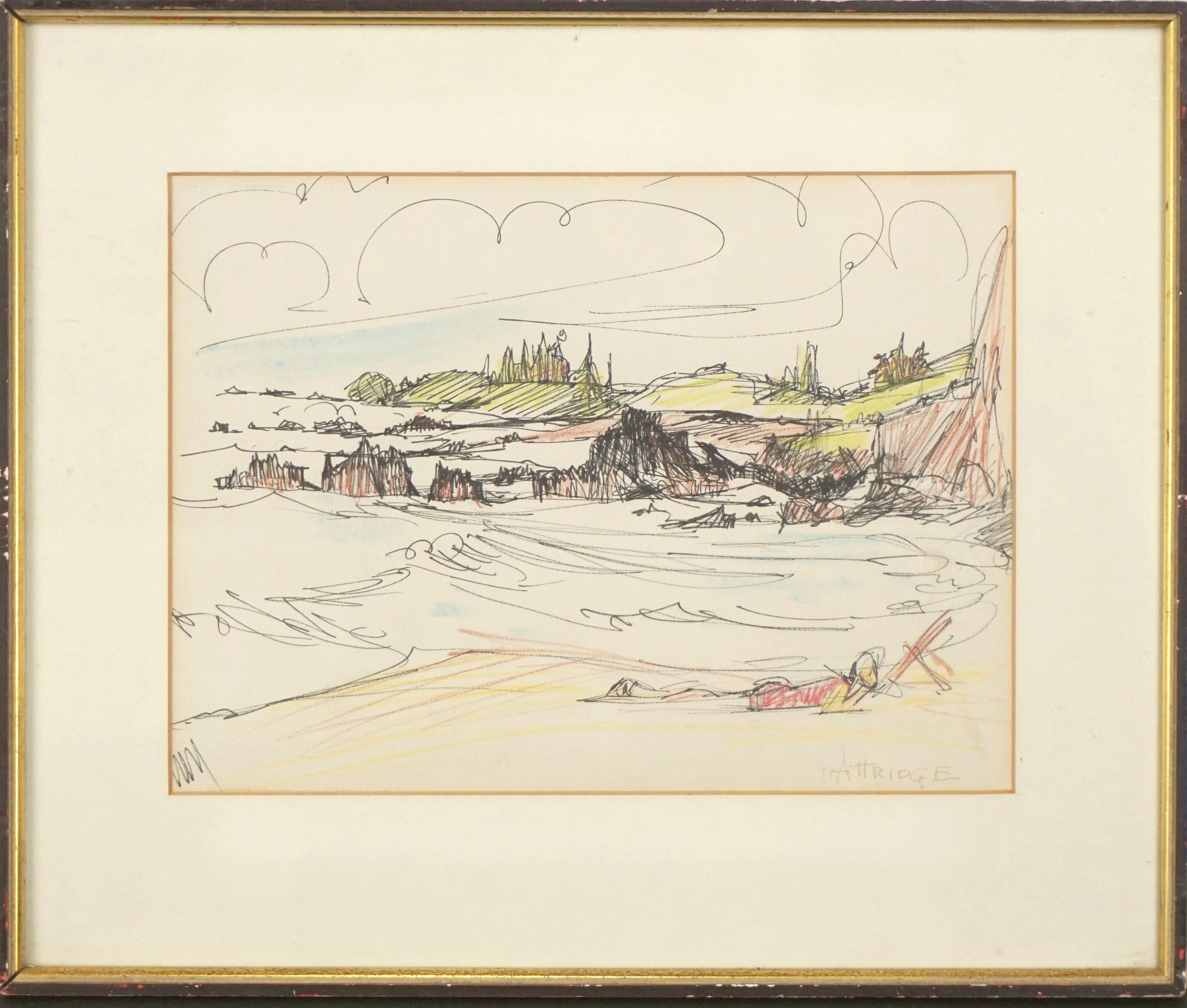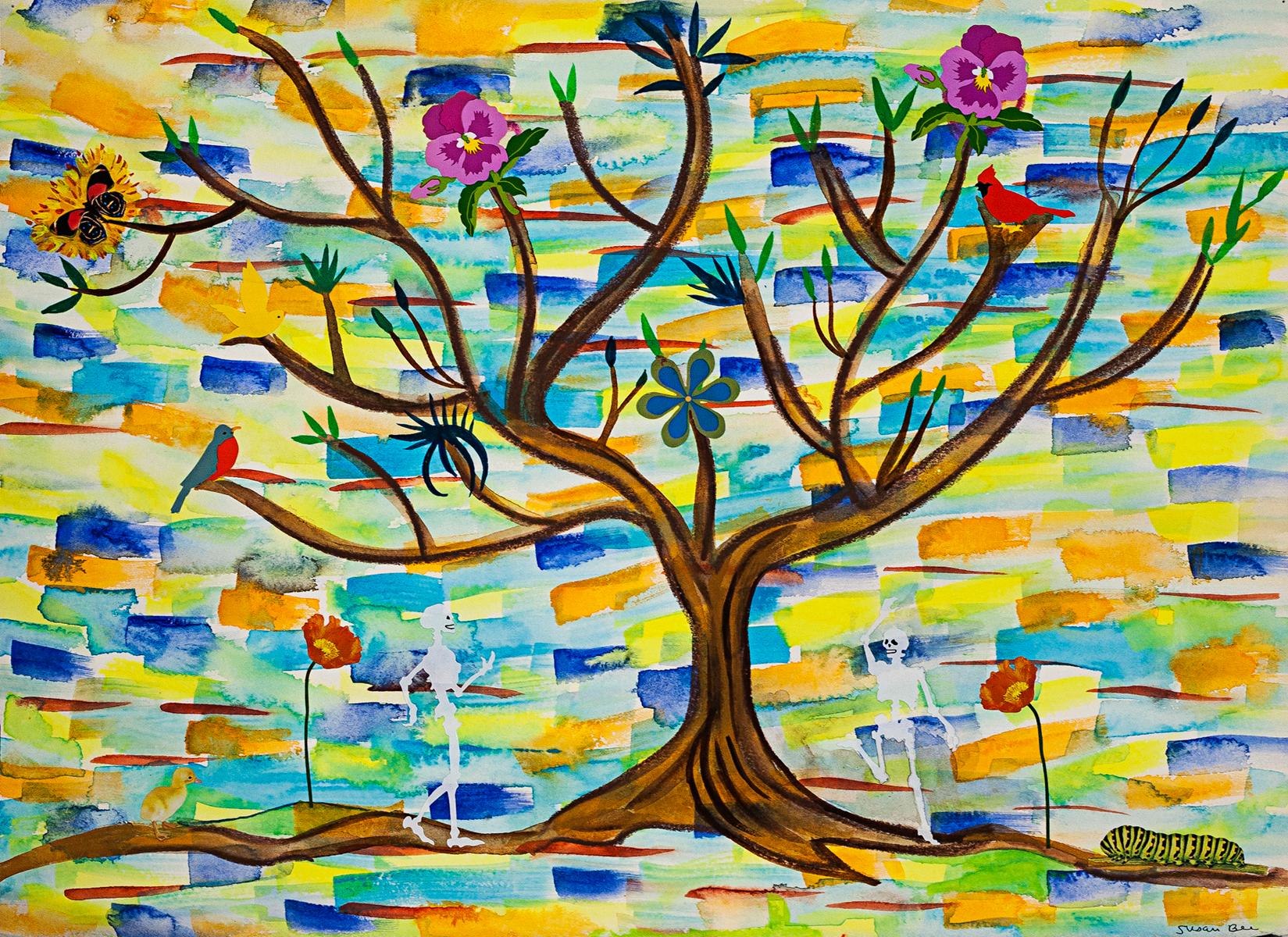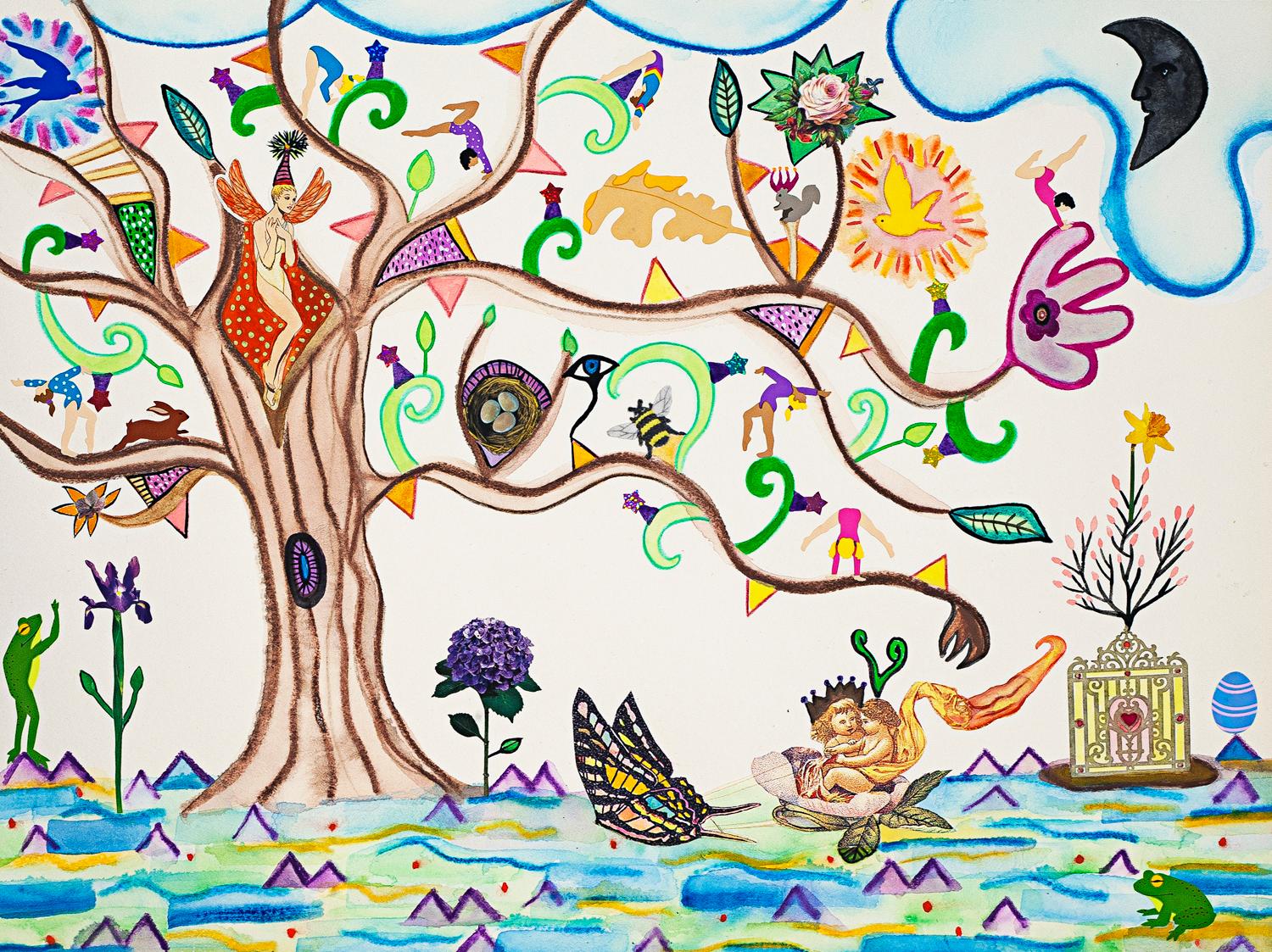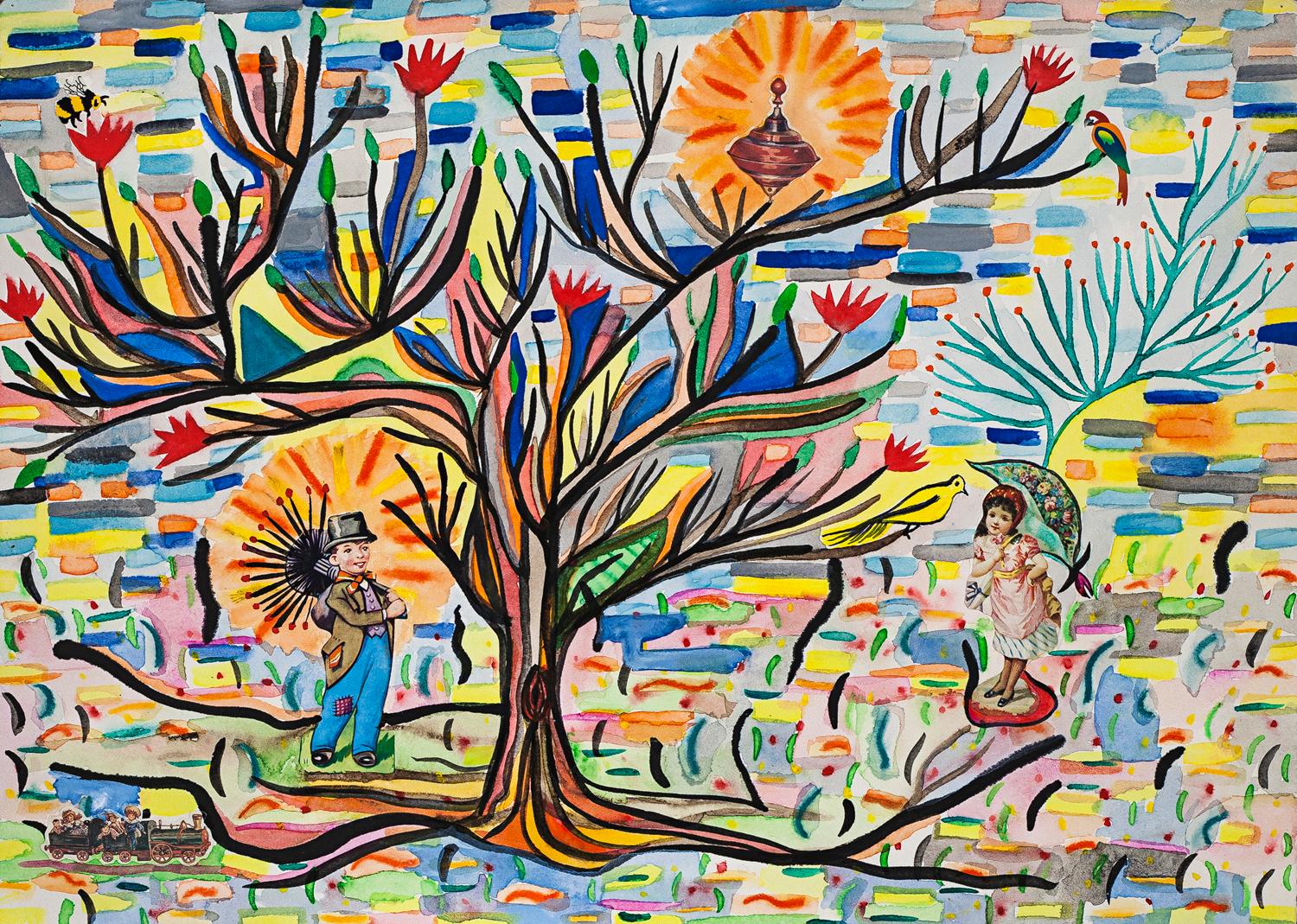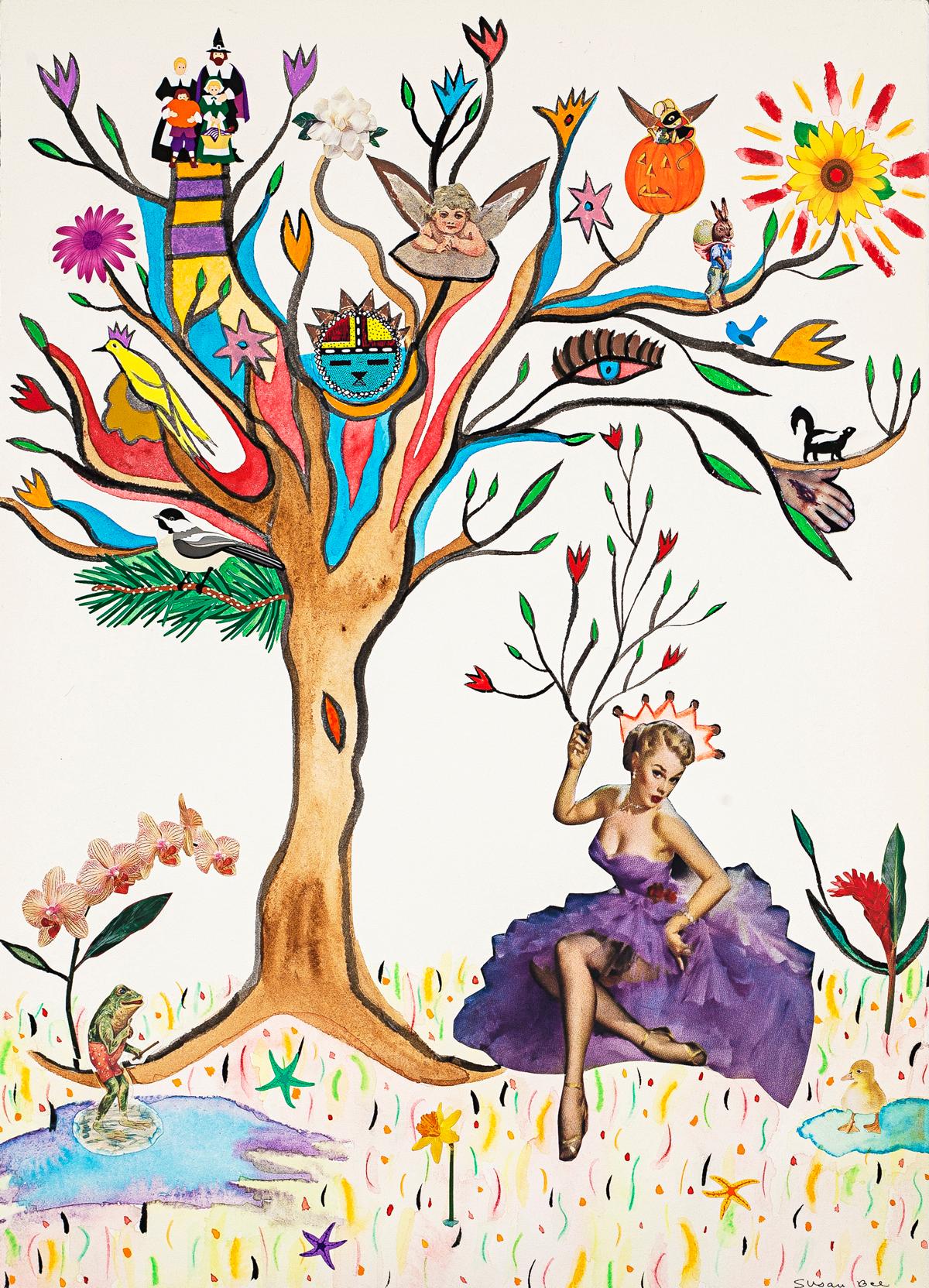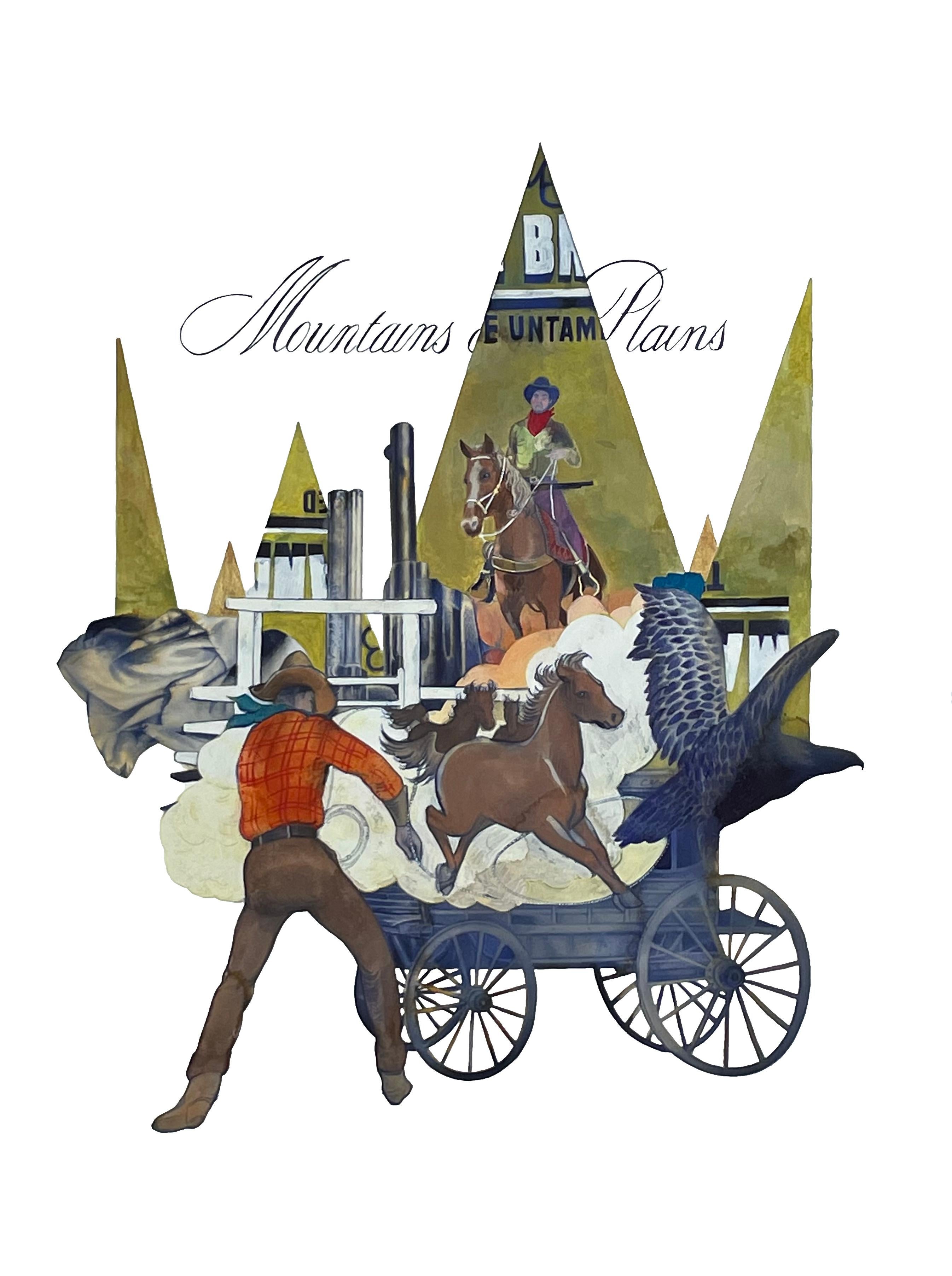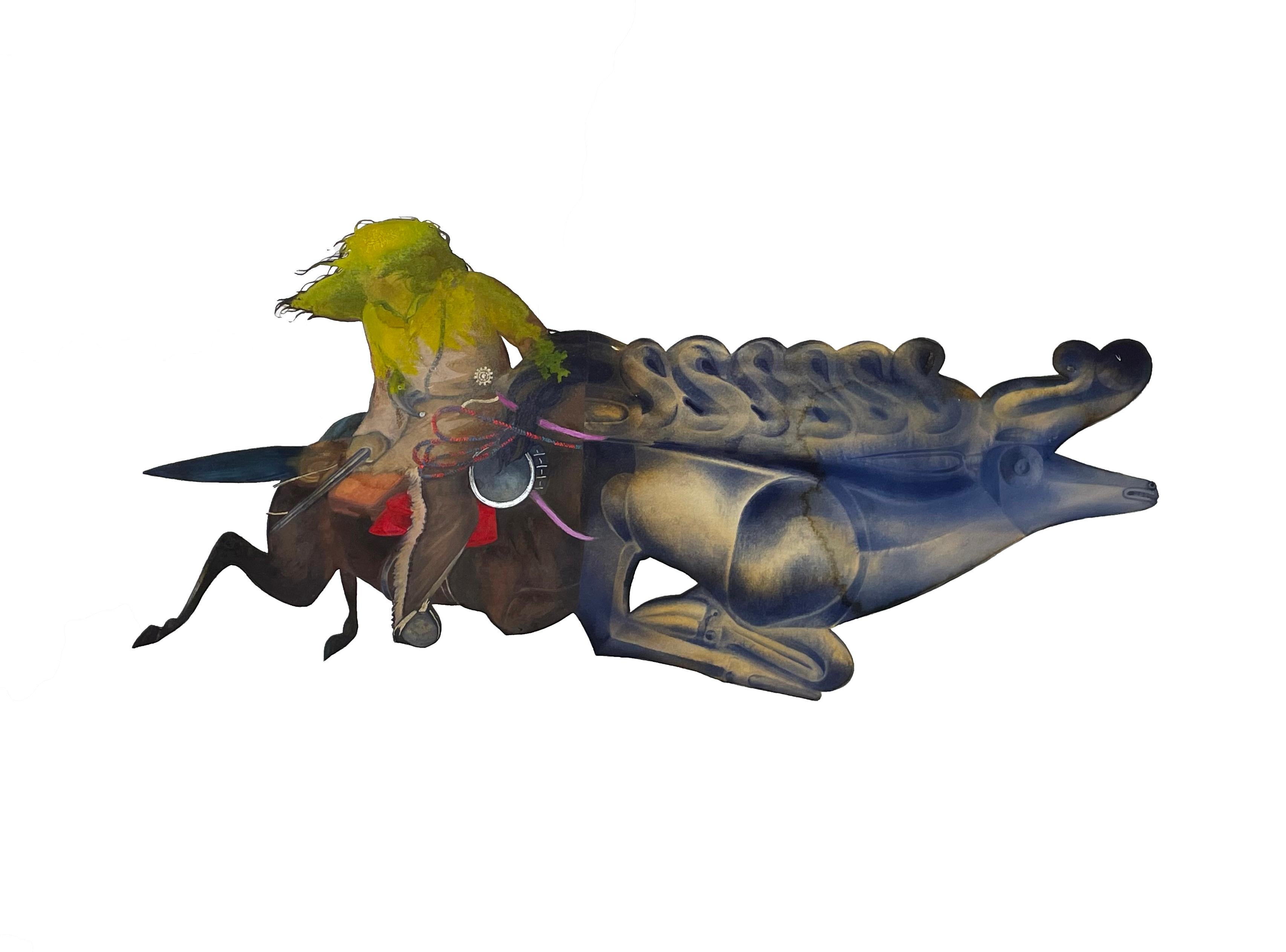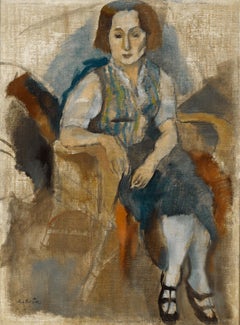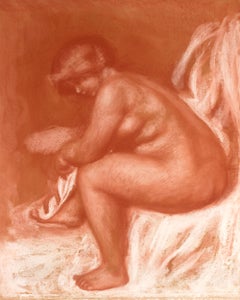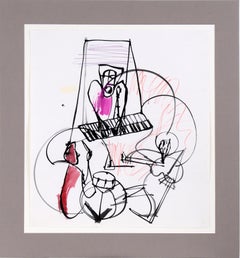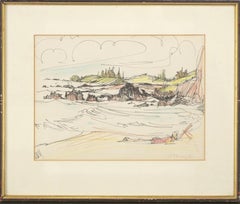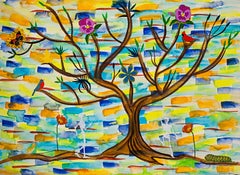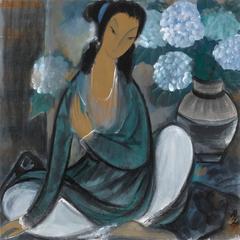
Seated Lady and Dahlia
View Similar Items
Want more images or videos?
Request additional images or videos from the seller
1 of 8
Lin FengmianSeated Lady and Dahlia Circa late 1970s
Circa late 1970s
About the Item
- Creator:Lin Fengmian (1900 - 1991, Chinese)
- Creation Year:Circa late 1970s
- Dimensions:Height: 35 in (88.9 cm)Width: 35 in (88.9 cm)Depth: 1 in (2.54 cm)
- Medium:
- Movement & Style:
- Period:
- Condition:
- Gallery Location:New Orleans, LA
- Reference Number:Seller: 30-46021stDibs: LU1861293753
About the Seller
5.0
Vetted Seller
These experienced sellers undergo a comprehensive evaluation by our team of in-house experts.
Established in 1912
1stDibs seller since 2013
14 sales on 1stDibs
Typical response time: 4 hours
More From This SellerView All
- Femme aux Souliers Noir (Woman in Black Shoes)By Jules PascinLocated in New Orleans, LAThis intimate portrait was composed by the Bulgarian-born French Expressionist painter Jules Pascin. Known as the "Prince of Montparnasse," Pascin made a name for himself throughout ...Category
Early 20th Century Modern Portrait Paintings
MaterialsOil, Canvas
- Après le bain (After the bath)By Pierre Auguste RenoirLocated in New Orleans, LAFor Pierre-Auguste Renoir, Impressionism's pre-eminent figure painter, depicting the nude was an exercise in bringing the canvas to life. He once said, “I look at a nude, I see myriads of minuscule shades. I have to find those which will make the flesh on my canvas come to life and resonate.” This compelling portrait by Renoir entitled Après le bain presents the nude figure of a woman in a serene, private moment, absorbed in the task of drying herself after a bath. The artist’s mastery of light and shading is incredible, achieving a sense of vitality in this otherwise ordinary scene. Renoir is celebrated for his figural work, especially his Rubenesque female nudes, however, it was not until the artist was in his forties that he depicted the nude with any frequency. In 1881, Renoir traveled to Italy, where he studied the works of the Renaissance masters and the ancient art of Pompeii and Rome. Upon his return to France, the nude became his favored subject, and he used the motif to combine the spontaneity of Impressionism with the solid modeling of classical painting. Renoir’s medium here, sanguine, a reddish-brown chalk, was used extensively in the Renaissance by Leonardo (who employed it in his sketches for the Last Supper), Michelangelo and Raphael. Its warm hue lends itself well to depicting flesh, and the chalk drawing allows for a greater focus on line, form and texture in a departure from the aspects of color and light that so often preoccupied the Impressionists. Après le bain conveys the impression of arrested motion with perfect naturalness, deftly capturing the moment before the elegant lines of the sitter's form change position. The sitter is almost certainly Gabrielle Renard, the nanny to Renoir’s children and a frequent model for the artist. Gabrielle was the cousin of Renoir’s wife, Aline, and came to Montmartre to work for the family at the age of 16. She developed a strong bond with the family and became a favorite subject for Renoir, appearing in several of his most important works, including his 1911 Gabrielle with a Rose (Musée d'Orsay). When Renoir began to suffer from severe rheumatoid arthritis that would eventually leave him unable to walk and scarcely able to grasp a paintbrush, it was Gabrielle that would assist the artist by positioning the paintbrush between his crippled fingers. Born in Limoges, France in 1841, Renoir began his career as an apprentice to a painter of porcelain wares. He later moved to Paris at the age of 21, enrolling at the prestigious École des Beaux-Arts. It was here, while studying under Charles Gleyre, that Renoir attained a tremendous appreciation for the academic style of painting, a quality that would last throughout his career. This was also when he met Claude Monet and several other classmates, with whom he would later form the Impressionists. Working closely with Monet, Renoir began experimenting with the portrayal of light and its effect on his canvases. The youngest member of the Impressionist movement, an astute Renoir recognized how a subject was constantly changing due to the dynamic effects of light on color. Relying heavily upon his academic training that focused on composition, lines and descriptive details, Renoir distinguished himself among his contemporaries. His intuitive use of color and expansive brushstroke, along with acute attention to his subject, have placed him among the finest painters in history. This work is accompanied by a certificate of authenticity and will be included in the forthcoming catalogue raisonné of the work of Pierre-Auguste Renoir from the Wildenstein Plattner Institute. Circa 1898 Canvas: 43 1/2" high x 35 1/2" wide Frame: 57 3/4" high x 49 1/4" wide Provenance: Galerie Durand-Ruel, Paris (acquired from the artist on January 25, 1899) J. Pereire Collection, France (1966) Sam Salz, New York (before 1981) Claus Virch, Paris French Compagny, Inc., New York Larry Silverstein, New York (circa January 1987) Le Clos de Sierne Gallery, Geneva Galerie Heyram, Paris (October 1987) Francis Gross M.S. Rau, New Orleans Literature: B. Schneider, Renoir, Berlin, 1957, p. 95 (illustrated in color, p. 83) M. Gauthier, Renoir, Paris, 1958, p. 83 (illustrated in color; erroneously dated '1916' and titled 'Woman in her toilet') F. Fosca, Renoir, L'homme et son obra, Paris, 1961, p. 280 (illustrated, p. 95; erroneously dated 'about 1890' and titled 'After the Bath...Category
19th Century Impressionist Nude Paintings
MaterialsCanvas, Paper, Chalk
Price Upon Request - The Visit of the English Squadron to Le HavreBy Raoul DufyLocated in New Orleans, LARaoul Dufy 1877-1953 French The Visit of the English Squadron to Le Havre Signed "Raoul Dufy" (lower center) Watercolor and gouache on paper Growing up along the coastline of the...Category
Early 20th Century Post-Impressionist Landscape Paintings
MaterialsWatercolor, Gouache, Archival Paper
- Paysanne Nouant son Foulard (Peasant Arranging her Scarf)By Camille PissarroLocated in New Orleans, LAThis intimate work by Camille Pissarro represents a period of significance for the Impressionist master. The early 1880s was a time of great experimentation for the artist, after he spent much of the preceding decade devoted to landscape painting. Shifting focus, he embarked on a series of works in a range of media dedicated to the human figure - particularly peasant women. In watercolor, gouache, pastel, and print, Pissarro captured the rural female and the minute moments of domestic life. Depicting a peasant woman tying her scarf, Paysanne Nouant son Foulard displays the harmony of color and composition that typifies his work of the 1880s. Composed of a symphony of color and strokes of paint, the work exemplifies the plein air technique of Pissarro's best Impressionist canvases. A true master of his art, no other artist successfully chronicled rural peasant life quite like Pissarro. Counted among the most respected artists of the 19th century and widely considered the father of Impressionism, Pissarro’s works experienced a surge in interest in the early 2000s. This is reflected in Pissarro’s new auction record of over $32.1 million, set at a 2014 Sotheby’s auction in London, which far surpassed his previous record of $14.6 million. Born in St. Thomas in the Danish West Indies, Pissarro was sent to school in Paris at the age of 11, where he first displayed a talent for drawing. In 1855, having convinced his parents of his determination to pursue a career as an artist rather than work in the family shipping business, he returned to Paris where he studied at the Académie Suisse alongside Claude Monet. At the outbreak of the Franco-Prussian War in 1870, Pissarro moved to England. With Monet, he painted a series of landscapes around South-East London and studied English landscape painters in the museums. When he returned home to Louveciennes a year later, Camille discovered that all but 40 of the 1500 paintings he had left there - almost 20 years of work - had been vandalized. In 1872, Camille settled in Pontoise where he remained for the next 10 years, gathering a close circle of friends around him. Gauguin was among the many artists to visit him there and Cézanne, who lived nearby, came for long periods to work and learn. In 1874, Pissarro participated in the first Impressionist exhibition...Category
Late 19th Century Impressionist Portrait Drawings and Watercolors
MaterialsPastel, Paper
- L'odalisque à l'éventail (The Odalisque with the Fan)By Léon François ComerreLocated in New Orleans, LALéon François Comerre 1850-1916 French L'odalisque à l'éventail (The Odalisque with the Fan) Signed "Léon Comerre" (upper left) Oil on canvas Combinin...Category
Late 19th Century Academic Portrait Paintings
MaterialsCanvas, Oil
- Italian Panel with Satyr and NymphsLocated in New Orleans, LAThis extraordinary Italian gouache and oil on canvas brings two of the most popular characters from Greek mythology vividly the life - the nymph and the satyr. Both creatures are famed for their carefree natures and lascivious temperaments, and tales abound of satyrs pursing nubile nymphs in order to rape or seduce them, usually with little success. One such narrative humorously unfolds in the present piece, which depicts an indignant satyr captured by three nymphs with a golden net. The relationship between these two mythological creatures was a popular one for artists throughout the 18th and 19th centuries, though its origins stretch back to antiquity. Both satyrs and nymphs...Category
Early 19th Century Other Art Style Figurative Paintings
MaterialsCanvas, Oil, Gouache
Price Upon Request
You May Also Like
- Jazz Trio - Abstract Expressionist Composition in Ink and Watercolor on PaperBy Michael William EgglestonLocated in Soquel, CADynamic, expressive rendition of a jazz trio by San Francisco artist Michael William Eggleston (American, 20th century). There are three abstracted figures in this piece - a guitar p...Category
Late 20th Century Modern Figurative Paintings
MaterialsPaper, India Ink, Watercolor, Color Pencil
- Mid Century Modern Mixed Media Painting -- Day at the BeachLocated in Soquel, CAWonderful mid century mixed media coastal/figurative in loose/painterly style by Irmal Gertrude Attridge (American, 1894-1962), circa 1950. Signed lower right. Presented in vintage frame under glass (included as-is). Image size: 9"H x 12"W. Irma Gertrude Attridge was born in Chicago and studied at Chouinard Art Institute in Los Angeles with Henry McFee and Oscar Van Young. Member of Calif. AC; AEA; Cal. WC. Soc.; Women Painters...Category
1950s Modern Landscape Paintings
MaterialsInk, Color Pencil, Watercolor
- Susan Bee, Caterpillar and Landscape, gouache, collage, ink, colored pencilBy Susan BeeLocated in Darien, CTSusan Bee's drawings are made up of collage elements including children’s stickers and imagery, ink, gouache, watercolor, crayon, and colored pencil. The richness of the imagery in ...Category
Early 2000s Feminist Figurative Paintings
MaterialsCrayon, Ink, Watercolor, Gouache, Archival Paper, Synthetic Paper, Color...
- Susan Bee, Bowers ofFlowers, 2006, gouache, collage, ink, crayon, colored pencilBy Susan BeeLocated in Darien, CTSusan Bee's drawings are made up of collage elements including children’s stickers and imagery, ink, gouache, watercolor, crayon, and colored pencil. The richness of the imagery in ...Category
Early 2000s Feminist Figurative Paintings
MaterialsCrayon, Ink, Watercolor, Gouache, Archival Paper, Synthetic Paper, Color...
- Susan Bee, Winged Fairies, 2006, gouache, collage, ink, crayon, colored pencilBy Susan BeeLocated in Darien, CTSusan Bee's drawings are made up of collage elements including children’s stickers and imagery, ink, gouache, watercolor, crayon, and colored pencil. The richness of the imagery in ...Category
Early 2000s Feminist Figurative Paintings
MaterialsCrayon, Ink, Watercolor, Gouache, Archival Paper, Synthetic Paper, Color...
- Susan Bee, Big Wave, 2006, gouache, collage, ink, crayon, colored pencil, colBy Susan BeeLocated in Darien, CTSusan Bee's drawings are made up of collage elements including children’s stickers and imagery, ink, gouache, watercolor, crayon, and colored pencil. The richness of the imagery in ...Category
Early 2000s Feminist Figurative Paintings
MaterialsCrayon, Ink, Watercolor, Gouache, Archival Paper, Synthetic Paper, Color...
Recently Viewed
View AllMore Ways To Browse
19th Century Ink Well Stand
Japanese Scroll Framed
Chinese Ceramics Song Dynasty
Black Dahlia
Antique British Columbia
Song Dynasty Painting
Song Dynasty Black
Revolutionary War Soldiers
Sino War
Lady From Shanghai
Lin Fengmian
Portrait Venice
Picasso Line Art
Havana Art
Oil Painting Of Old Man
Indian Painters
War Club
London Street Scene Painting
